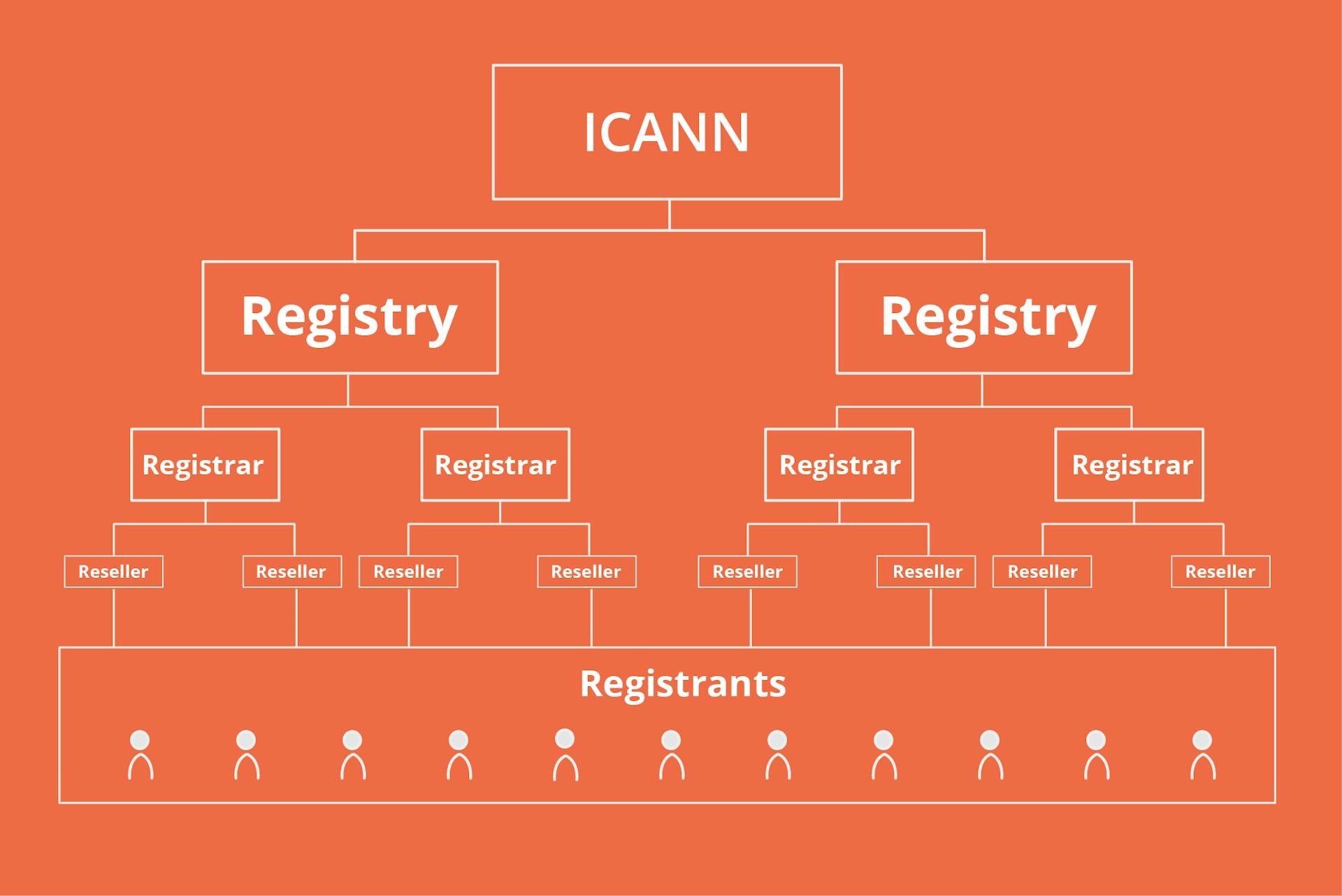by AK DEV
The traditional domain name system used by Web 1.0 and Web 2.0 is a hierarchical, centralized system that maps human-readable domain names, such as google.com, to IP addresses that are used to identify devices on the Internet. It has a number of drawbacks, including security, scalability, and privacy concerns.
To get a domain, a user has to buy it from a registrar. But once purchased, the domain does not become its property: its lease must be renewed regularly and, if a dispute arises, the domain name can be blocked or even taken away by court order.
It turns out that the whole Internet is controlled by several centralized organizations. For example, the Internet Corporation for Assigned Names and Numbers (ICANN) alone has complete control over the process of granting permission for new extensions (.com, .net, .org, and others).

The Era of Blockchain Domains
Until recently it was only possible to get a domain name through accredited registrars (or their resellers), directly or indirectly under the authority of ICANN and the national registries. But a few years ago, decentralized blockchain-based domains emerged.
A decentralized system has no central authority controlling the system, which means it is more secure and resilient to attack and disruption. The Web 3.0 domain system is based on blockchain technology, the same technology that underpins cryptocurrencies such as Bitcoin and Ethereum.
The Web 3.0 domain system provides increased security. In the traditional DNS system, domain names and IP addresses are stored on centralized servers that can be vulnerable to hacking and other types of cyberattacks. In a decentralized system, domain name information is stored on a distributed network of nodes, making it much more difficult for a single attacker to compromise the system.
Another advantage of a Web 3.0 domain system is increased scalability. In a decentralized system, anyone can register a domain name and add it to the network, making the process much faster and more efficient.
Finally, the Web 3.0 domain system provides greater privacy for users. In the traditional DNS, information about domain names is often stored on central servers that can be accessed by governments, ISPs, and other organizations. In a decentralized system, domain name information is encrypted and stored on a distributed network of nodes, making access to this information much more difficult.
The main differences between blockchain domains and regular domains
- A blockchain domain is more like a separate domain asset on a blockchain. The owner of this asset is fully responsible for accessing it – the same principle as blockchain wallets applies here – if he loses the private key to the domain, access is also lost;
- the owner of the blockchain domain has complete control over it and can manage it unilaterally. This effectively eliminates the possibility of external censorship and greatly increases security. Only the owner of the domain can delete it, block access to it, or change something about it;
- in a decentralized internet, there is no central management body – domains are stored in a public, decentralized registry
Main types of blockchain domains
HNS (Handshake domains)
A coin system is used to register Handshake domains. Currently, Namecheap is the only domain registrar through which it is possible to register a domain in the Handshake system.
More importantly, Handshake domains do not work through a web browser, which means that you will have to use a VPN, browser extension, or Handshake software to access Handshake websites. This is a serious limitation that certainly hinders the growth of Handshake domains.
Handshake domains are currently suffering from limited access. At this point, they are more of a working demonstration model than a working tool.
ENS (Ethereum domains)
The concept of ENS is very similar to dynamic DNS, which maps website names to their IP addresses. ENS takes a similar approach, seeking to map a crypto-address to a website URL, making them easier to share and read.
The Ethereum Name Service relies on two smart contracts on the Ethereum blockchain: Resolver and the ENS registry. The latter is a database of all domain names, while the former resolves domain names, turning them into readable addresses.
Unlike Handshake domains, several major browsers are capable of resolving ENS domains. Browsers such as Brave, Opera, Puma, and MetaMask Mobile are currently supported. Safari and Chrome are not yet supported.
Unstoppable domains
These domains can be bought, sold, or donated like traditional NFTs. In contrast to traditional domain names, there is a one-time cost to buy an Unstoppable domain, not every year.
Functionally, Unstoppable domains can be used for address resolution, for sending and receiving cryptocurrency, and as a unique username.
Finally
The Web 3.0 domain system offers several significant improvements over the traditional DNS system. It offers improved security, enhanced scalability, and greater privacy for users, which will play a critical role in shaping the future of the Internet. The adoption of the Web 3.0 domain system is still in its early stages, but it is likely to become increasingly popular as the technology matures and more people become aware of its benefits.
The listed blockchain domain name systems are likely to carve out a niche for themselves in the Web 3.0 era.



